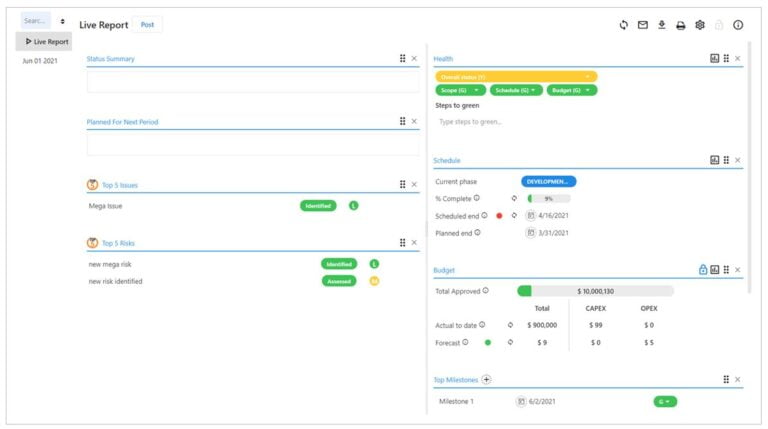
A status report is a document that shows the progress of a project during its lifecycle.
It typically includes information such as the current status of project milestones, budget updates, risks and issues encountered, and any changes to the project scope or schedule. Project status reports are essential tools for keeping stakeholders informed about the project’s health and ensuring transparency and accountability throughout its lifecycle. They help project managers and team members track progress, identify areas needing attention, and make informed decisions to keep the project on track toward its objectives.
Any organization may have their own requirements, but, regardless of the format used, all have similar content that can include:

The goal of a status report is to show the project’s progress quickly and clearly.
Every organization may require a different approach, but good project management should be consistent across the board. If specifics are required, they can always be address in a separate document.
To help your project management journey, consider Completix. It has been created with status reports as a cornerstones of its design and can guide you to automatically produce the best status report for your projects with minimal effort.

When dealing with multiple projects, one of the main challenge is the ability to quickly spot issues and deviations. To address this, all status reports should have the same look and feel, so a reader knows exactly where to look and what to expect.
Uniformity of delivery is a key part of a PMO process, along with templates and clear steps to follow. Completix Project Governance is part of our platform and can help you define and follow the perfect process for your business.